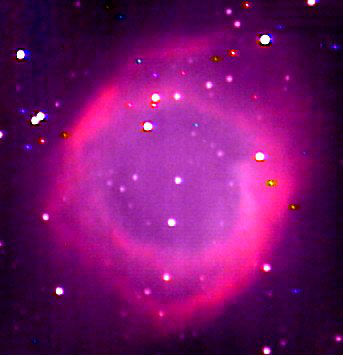This story is part of a monthly series about astronomical events along the N.C. coast. It is reprinted from the Island Free Press.
First, kudos to the Cape Hatteras Electric Cooperative on its recent announcement of a new initiative to reduce light pollution.
Supporter Spotlight
According to Susan Flythe, executive vice president and general manager, the cooperative board of directors voted on Nov. 19 to approve the replacement of the 100-watt and 250-watt high-pressure sodium security lights with LEDs beginning in 2016.
“The opportunity to be responsive to dark sky issues combined with maintenance cost savings and REPS compliance were compelling arguments for changing the lights,” Flythe told me in an e-mail.
The co-op provides outdoor security lights to its customers who are changed a monthly rate for them.
The most important feature of the new LED fixtures is that the shades direct the light down to the ground. This initiative should definitely help improve our night skies.
November Highlights

NGC7293, the Helix Nebula, is often called the “Eye of God” or “Eye of Sauron” Nebula — if you’re a fan of The Lord of the Rings. Two years ago, I got a very poor shot of NGC 7293 that took about two hours to capture. It is only visible through a telescope for a short time each year. When visible, it is fairly close to the southern horizon and is obscured by the any lights from southern cities or towns.
Supporter Spotlight
This image is the result of “stacking” 40 images together to get enough information to reveal the nebula. Each individual image took 75 seconds to collect on the telescope. I took about 80 exposures and used the best ones for the final product. After stacking, I had to perform some very detailed image processing to get to the final result. So, this image took two years of waiting for a clear, calm night at the proper time of year, about three hours of intense telescope time and 10 hours of image processing.
December Skywatching
The Geminids meteor shower will peak on the nights of Dec. 13-14 and 14-15. You can expect to see as many as 100 meteors per hour. The best viewing will start about 9 p.m. and run through the night until dawn. The meteors will appear to originate from the constellation Gemini, the twins. Gemini is easy find — at 9 p.m., it will be the two bright stars close together in the east-northeast sky.
Neptune and Uranus will be in the night skies. On an exceptionally clear night, you might be able to see Uranus with the naked eye, but you need strong binoculars or a telescope to see Neptune.
Mercury will be visible near the southwest horizon right after sundown for the second half of December.
Jupiter, Mars, and Venus will all be visible near the eastern horizon in the early morning hours.
The constellation Orion will be one of the dominant sights of the night skies in December. In the beginning of the month, it will rise in the east around 7:30 p.m. By the end of the month, it will be rising at sundown. M42, the Orion Nebula, is visible to the naked eye. It is located around the second star in the sword of Orion. If you have trouble making it out, grab a pair of binoculars. I am sure you will enjoy the sight.

Moon Phases
Last Quarter: Dec. 3
New Moon: Dec. 11
First Quarter: Dec. 18
Full Moon: Dec. 25
Astronomy Talk
“Stacking” is a technique used in astrophotography to reduce the signal-to-noise ratio when processing images of deep-space objects. The basic theory is the signal from an object is constant, while noise is random. Stacking programs analyze a series of images to find and remove the random noise.
This story is provided courtesy of the Island Free Press, a digital newspaper covering Hatteras and Ocracoke islands. Coastal Review Online is partnering with the Free Press to provide readers with more environmental and lifestyle stories of interest along our coast. You can read other stories about Hatteras and Ocracoke here.







